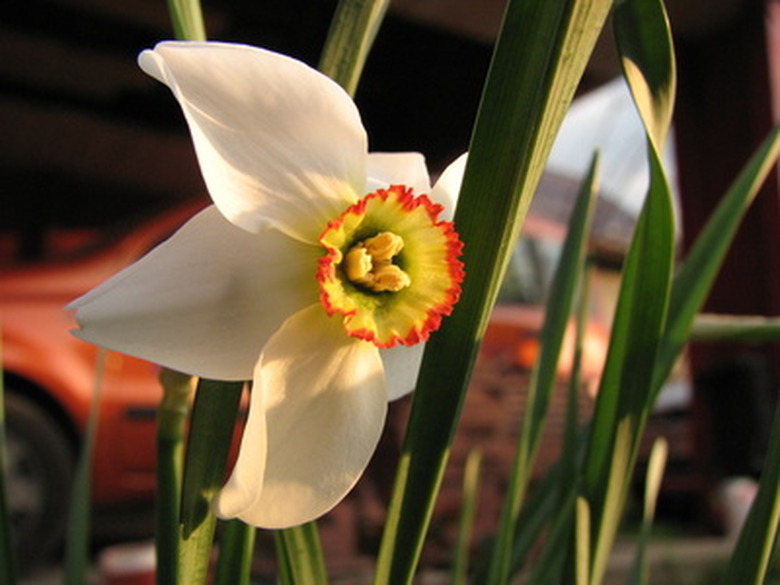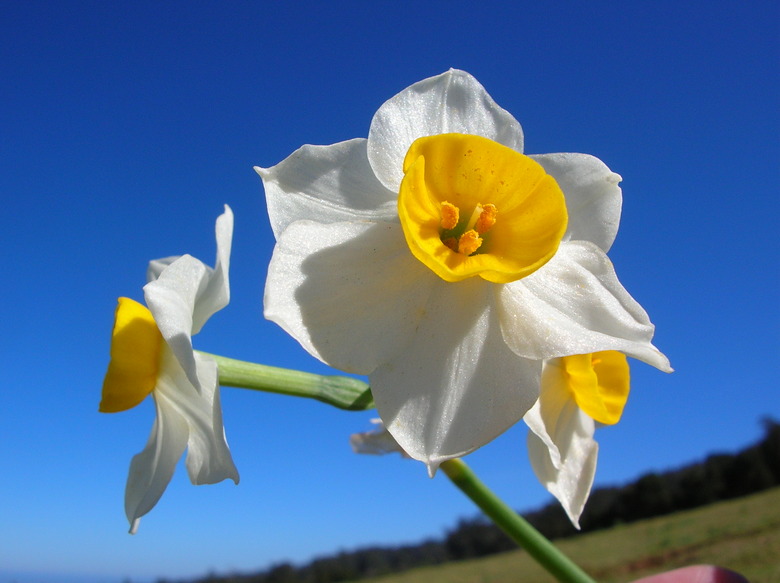How To Store Paperwhite Bulbs
A paperwhite (Narcissus tazetta, USDA hardiness zones 8 to 11) flower defines itself with several different names, but the Narcissus tazetta is the most familiar of the daffodil-in-appearance delicate flowers.
Paperwhites are a perennial type of narcissus, with flower bulbs classified as "tender." Unlike other daffodil bulbs, they do not need a chill period over the winter months. Israel is the largest producer of the long, graceful and elegant paperwhite bulb and flower.
The flower originated in the Mediterranean region as well as the areas adjacent to Asia. Arab traders introduced them to the Chinese about 1,000 years ago, and they were used in commerce.
Since they bloom in early January, the paperwhite is closely associated with the Chinese New Year. Chinese laborers and immigrants brought the paperwhite with them to America in the 1850s during the California Gold Rush.
The Bulbous Paperwhite
The paperwhite bulb contains all the nutrients necessary for growth. The narcissus is a true bulb in that its leaves grow from the top of the bulb while the roots emerge from its bottom.
It thrives underground, with only its shoots emerging from the top, which isn't covered during its growth period. The paperwhite's bulb, or storage vessel, can be dried, stored and planted to sprout again.
Growing Paperwhites
Planting paperwhites is as simple as placing the bulbs in a dish of water and gravel to encourage flowering, according to Chinese custom. Chinese immigrants in the San Francisco Bay Area continued the custom, as they were familiar with the bulbs grown in the Fujian Provence, where many of them were from and where the bulbs most frequently originated.
Paperwhite narcissus are the oldest and most widely distributed of the Narcissus tazetta variety, and when planting to bloom indoors, group them when planting in potting soil or gravel. Keep the bulbs at a level where only 1 inch of the pointed end of the bulb is exposed. Add enough water so that the water level reaches the base of the bulb but go no further.
**The roots need to grow, and they do best when the container is placed in a cool, dark place and has adequate drainage holes.** After two weeks, the container can be moved to a sunny window where it receives direct sunlight.
After about six weeks, flowering will occur, and fragrant flowers appear. Forcing is best done between late fall and March.
When planting the bulbs in the ground, spacing is important. They should be 4 to 6 inches apart and 4 to 6 inches deep in the soil. **Late winter is the opportune time for outdoor planting of paperwhites.**
Tip
Extend the life of the flower by placing the container in a cool environment during the night. However, avoid freezing temperatures; 60°F is ideal.
Harvesting Paperwhite Bulbs
Unlike those of the tulip (Tulipa spp., zones 3 to 7), hyacinth (Hyacinthys spp., zones 4 to 8) and amaryllis (Amaryllis spp., zones 8 to 10), tender bulbs, such as the paperwhite, need special care when harvesting and storing.
**They are grown indoors, or if left in the ground, they tolerate only warm climates.** The paperwhite bulb is only good for one blooming period when grown indoors.
Forcing Paperwhites
To force paperwhites, meaning growing indoors under specific conditions to produce spring flowering, paperwhite bulbs can only be used once. Once the flowering period is over, let the bulbs remain in the potting mix, as nutrients are passed from the flower to the bulb.
Once the flower is yellow and completely died back and the bulb is dormant, replant it in a container with potting soil and be sure the plant bulbs are well spaced and placed in a cool environment. If you are using the bulbs for indoor blooming, store them in a paper bag or mesh bag and in a location where temperatures do not go above 75°F.
References
- Texas A&M AgriLife Extension: Paperwhite Daffodil Bulbs for the Holidays
- New Mexico State University: Reblooming Paperwhite Narcissus
- University of California Cooperative Extension Master Gardeners of Lake Tahoe: A Gift for the Gardener in Your Life – Forcing Paperwhite Bulbs (Narcissus Tazetta)
- Mississippi State University Extension: How to Grow Paperwhite Narcissus
- Cornell Cooperative Extension: Bulbous Plants for Indoor Bloom
- North Dakota Master Gardener Program Newsletter: Exercising Your Green Thumb in Winter: Forcing Spring Bulbs Indoors

